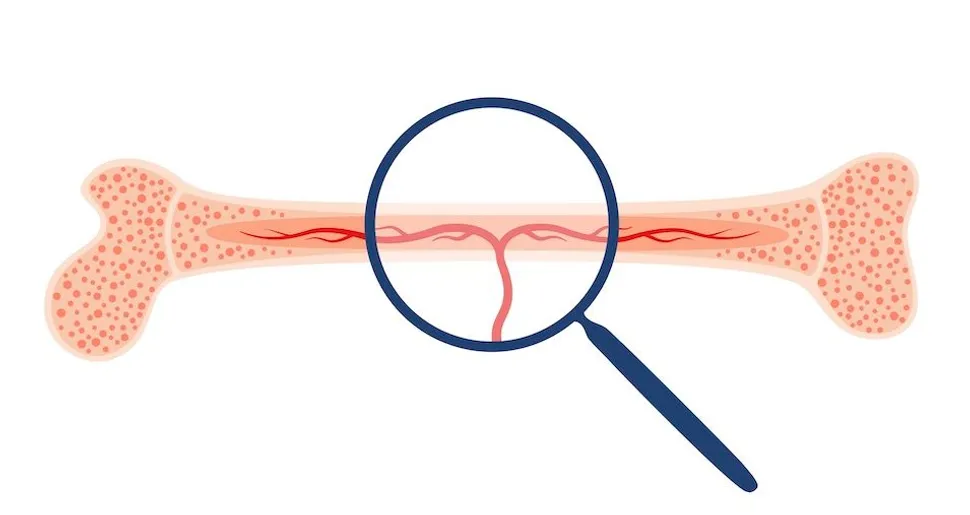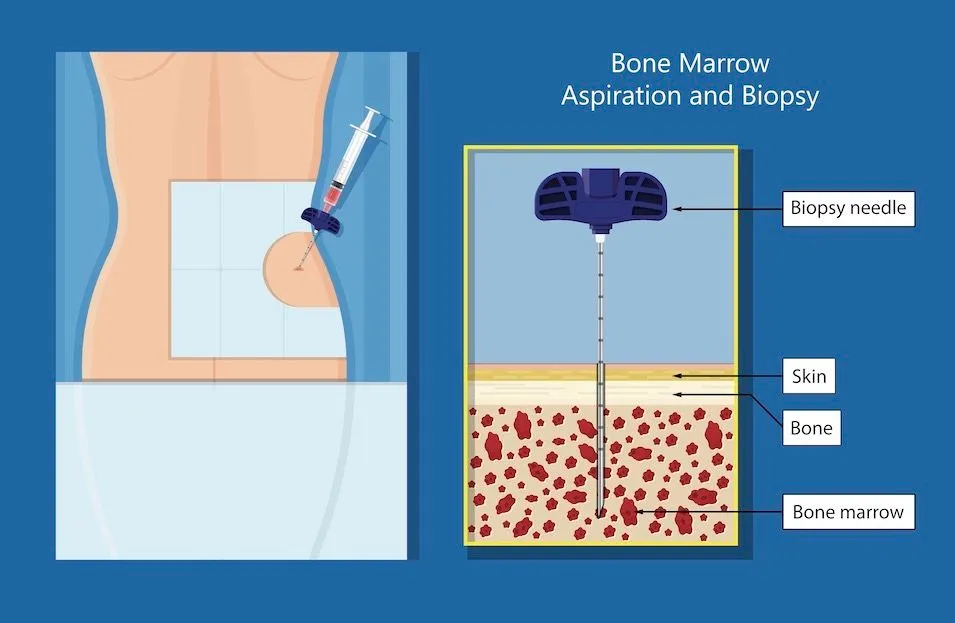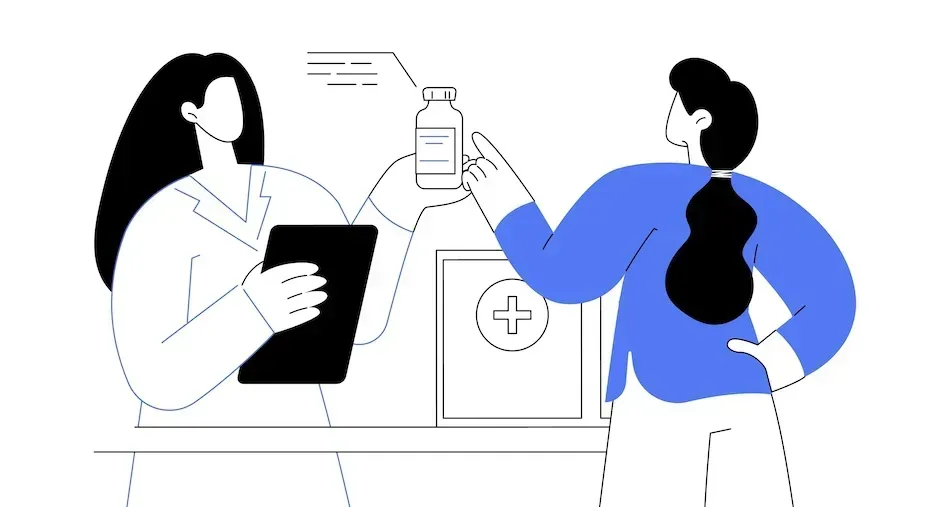Tests for CLL Patients: Bone Marrow Aspiration & Biopsy

A CLL patient’s doctor may recommend completing bone marrow tests. They are not common for CLL patients but may be a helpful resource if the CLL specialist believes the results can provide valuable insight.
The tests include removing a sample of the bone marrow liquid (aspiration) and/or sponge (biopsy) to look at the blood cell environment. The majority of blood cells are created in the bone marrow. Looking at the bone marrow helps determine if the CLL cells are overcrowding other types of blood cells or if treatment is working and CLL cells are decreasing.
The aspiration and biopsy can be done in a clinic, doctor’s office, or hospital. They are usually done by either a hematologist, oncologist, hematologist oncologist, or a specially trained nurse.
Before the Test
Tell the doctor about:
- If you are allergic to anything (local anesthesia, IV sedation, Entonox, or antiseptic cleaning solution)
- What medicines you are currently taking
- If you have bleeding problems (if you are taking a BTK inhibitor, that can increase risk of bleeding)
Choose pain management medicine for the test:
- Decide if you would like additional IV sedation before the procedure (partial or full) on top of the included numbing solution at the collection site. Another additional medicine available is a breathable relaxant called Entonox
- If you have chosen IV sedation
- Hold off on eating/drinking for 6 hours before the procedure
- Arrange for a driver to take you home as you will be drowsy for up to 24 hours after sedation
- If you have chosen IV sedation
Medicines to take and not take beforehand
Patients can continue to take the medicines they are currently prescribed. Exceptions to this include blood thinners to help reduce the risk of excess bleeding. If patients need to take an over-the-counter pain medicine, Tylenol is safe as it does not thin the blood. Talk to your doctor about anything you are taking (this includes vitamins, herbs, anti-platelet medicines, non-steroidal anti-inflammatories, aspirin products, and/or anti-coagulants) to ensure they won’t cause a risk of excess bleeding.
Steps of the Bone Marrow Tests
The bone marrow aspiration alone takes about 10 minutes. Aspiration and biopsy together take about 30 minutes (this does not include the time of IV sedation if the patient chooses to receive that).
- The patient is asked to change into a hospital gown. The physician will place an additional covering over the patient to only show the bone marrow test site
- The patient can lay on their stomach or side for the procedure
- The physician locates the biopsy site. The majority of the time the iliac crest on the hip is used for safety reasons. Since there are no major blood vessels or organs located close to that area, it is easily accessible and is associated with fewer complications. Either the right or left iliac crest can be biopsied
- The site area is sanitized (feels a bit cold briefly)
- Numbing solution is distributed at the site location via a needle. This may briefly sting
- The bone marrow aspiration needle is inserted. A twist and push motion is used to place into the bone marrow. A syringe is placed into the top portion of the bone marrow aspiration tool to pull up a few syringes of bone marrow liquid
- The bone marrow aspiration needle is removed. The next and last biopsy needle is inserted using a swivel and push motion to obtain a 1-2 cm piece of bone marrow sponge
- The tool is removed and a bandage is placed on the site applying pressure. The patient is asked to lie on their back for 10-15 minutes continuing to place pressure on the site and allow the wound to heal over. Pain typically disappears within 10 minutes after the procedure. The hole in the bone typically completely heals within 1-2 weeks after the procedure

Image source: Shutterstock
Expected pain level and pain management medicines
- A group of patients who received the aspiration alone with no IV sedation reported low to moderate pain for the brief procedure. Patients who also received the biopsy along with the aspiration reported moderate to high pain
- All patients receive local numbing solution at the test site. This numbs the area around the bone. The bone itself is not able to be numbed
- If patients would like less pain during the procedure, they should ask for IV sedation. They can choose to be partially or fully sedated. If the patient chooses IV sedation, they should stop eating and drinking 6 hours before the procedure. Patients receiving sedation need to set up another person to drive them home as they will be drowsy for up to 24 hours after the procedure
- If patients don’t want IV sedation but would like a breathable relaxant, they can request Entonox
After Procedure Side Effects
Common side effects
- Up to a week of tenderness at the test site. Patients can take Tylenol for pain reduction (is the only over-the-counter pain medicine that does not increase blood thinning)
- Minor bruising at the test site
- Tingling in the leg which wears off after a few hours
Uncommon side effects - contact doctor for follow-up care if experience:
- Bleeding soaks through the bandage and doesn’t stop with pressure on the area. Individuals with a low platelet count are at a higher risk of excessive bleeding
- Infection at exam site for patients with weak immune systems
- Worsening pain
- Large amounts of swelling, redness, or drainage at the biopsy site
- Fever
- Long-lasting discomfort at the bone marrow exam site
Procedure Aftercare
After the procedure, patients should:
- Avoid strenuous activity/exercise for 1-2 days following the test
- Keep the bandage on and the area dry to avoid water for 24 hours after the test (showering, bathing, swimming, hot tub etc)
Test Results
- Bone marrow samples are sent to a lab where a bone marrow specialist (pathologist or hematopathologist) examines them. Patients can expect their bone marrow test results (pathology report) back within 2-10 days. Their local hematologist oncologist explains the test results. For CLL, the test results are looking for if the lymphocytes are over or under 30% of the bone marrow. If over, the CLL cells are still high. If under, that means CLL is in remission.
Have questions about tests for CLL? Reach out to a CLL specialist.
A CLL patient’s doctor may recommend completing bone marrow tests. They are not common for CLL patients but may be a helpful resource if the CLL specialist believes the results can provide valuable insight.
The tests include removing a sample of the bone marrow liquid (aspiration) and/or sponge (biopsy) to look at the blood cell environment. The majority of blood cells are created in the bone marrow. Looking at the bone marrow helps determine if the CLL cells are overcrowding other types of blood cells or if treatment is working and CLL cells are decreasing.
The aspiration and biopsy can be done in a clinic, doctor’s office, or hospital. They are usually done by either a hematologist, oncologist, hematologist oncologist, or a specially trained nurse.
Before the Test
Tell the doctor about:
- If you are allergic to anything (local anesthesia, IV sedation, Entonox, or antiseptic cleaning solution)
- What medicines you are currently taking
- If you have bleeding problems (if you are taking a BTK inhibitor, that can increase risk of bleeding)
Choose pain management medicine for the test:
- Decide if you would like additional IV sedation before the procedure (partial or full) on top of the included numbing solution at the collection site. Another additional medicine available is a breathable relaxant called Entonox
- If you have chosen IV sedation
- Hold off on eating/drinking for 6 hours before the procedure
- Arrange for a driver to take you home as you will be drowsy for up to 24 hours after sedation
- If you have chosen IV sedation
Medicines to take and not take beforehand
Patients can continue to take the medicines they are currently prescribed. Exceptions to this include blood thinners to help reduce the risk of excess bleeding. If patients need to take an over-the-counter pain medicine, Tylenol is safe as it does not thin the blood. Talk to your doctor about anything you are taking (this includes vitamins, herbs, anti-platelet medicines, non-steroidal anti-inflammatories, aspirin products, and/or anti-coagulants) to ensure they won’t cause a risk of excess bleeding.
Steps of the Bone Marrow Tests
The bone marrow aspiration alone takes about 10 minutes. Aspiration and biopsy together take about 30 minutes (this does not include the time of IV sedation if the patient chooses to receive that).
- The patient is asked to change into a hospital gown. The physician will place an additional covering over the patient to only show the bone marrow test site
- The patient can lay on their stomach or side for the procedure
- The physician locates the biopsy site. The majority of the time the iliac crest on the hip is used for safety reasons. Since there are no major blood vessels or organs located close to that area, it is easily accessible and is associated with fewer complications. Either the right or left iliac crest can be biopsied
- The site area is sanitized (feels a bit cold briefly)
- Numbing solution is distributed at the site location via a needle. This may briefly sting
- The bone marrow aspiration needle is inserted. A twist and push motion is used to place into the bone marrow. A syringe is placed into the top portion of the bone marrow aspiration tool to pull up a few syringes of bone marrow liquid
- The bone marrow aspiration needle is removed. The next and last biopsy needle is inserted using a swivel and push motion to obtain a 1-2 cm piece of bone marrow sponge
- The tool is removed and a bandage is placed on the site applying pressure. The patient is asked to lie on their back for 10-15 minutes continuing to place pressure on the site and allow the wound to heal over. Pain typically disappears within 10 minutes after the procedure. The hole in the bone typically completely heals within 1-2 weeks after the procedure

Image source: Shutterstock
Expected pain level and pain management medicines
- A group of patients who received the aspiration alone with no IV sedation reported low to moderate pain for the brief procedure. Patients who also received the biopsy along with the aspiration reported moderate to high pain
- All patients receive local numbing solution at the test site. This numbs the area around the bone. The bone itself is not able to be numbed
- If patients would like less pain during the procedure, they should ask for IV sedation. They can choose to be partially or fully sedated. If the patient chooses IV sedation, they should stop eating and drinking 6 hours before the procedure. Patients receiving sedation need to set up another person to drive them home as they will be drowsy for up to 24 hours after the procedure
- If patients don’t want IV sedation but would like a breathable relaxant, they can request Entonox
After Procedure Side Effects
Common side effects
- Up to a week of tenderness at the test site. Patients can take Tylenol for pain reduction (is the only over-the-counter pain medicine that does not increase blood thinning)
- Minor bruising at the test site
- Tingling in the leg which wears off after a few hours
Uncommon side effects - contact doctor for follow-up care if experience:
- Bleeding soaks through the bandage and doesn’t stop with pressure on the area. Individuals with a low platelet count are at a higher risk of excessive bleeding
- Infection at exam site for patients with weak immune systems
- Worsening pain
- Large amounts of swelling, redness, or drainage at the biopsy site
- Fever
- Long-lasting discomfort at the bone marrow exam site
Procedure Aftercare
After the procedure, patients should:
- Avoid strenuous activity/exercise for 1-2 days following the test
- Keep the bandage on and the area dry to avoid water for 24 hours after the test (showering, bathing, swimming, hot tub etc)
Test Results
- Bone marrow samples are sent to a lab where a bone marrow specialist (pathologist or hematopathologist) examines them. Patients can expect their bone marrow test results (pathology report) back within 2-10 days. Their local hematologist oncologist explains the test results. For CLL, the test results are looking for if the lymphocytes are over or under 30% of the bone marrow. If over, the CLL cells are still high. If under, that means CLL is in remission.
Have questions about tests for CLL? Reach out to a CLL specialist.

about the author
Megan Heaps
Megan joined HealthTree in 2022. She enjoys helping patients and their care partners understand the various aspects of the cancer. This understanding enables them to better advocate for themselves and improve their treatment outcomes.
More on Navigating Your Health
Trending Articles

Get the Latest Chronic Lymphocytic Leukemia Updates, Delivered to You.
By subscribing to the HealthTree newsletter, you'll receive the latest research, treatment updates, and expert insights to help you navigate your health.
Together we care.
Together we cure.
3x Faster.









